Systematic Roadkill Survey
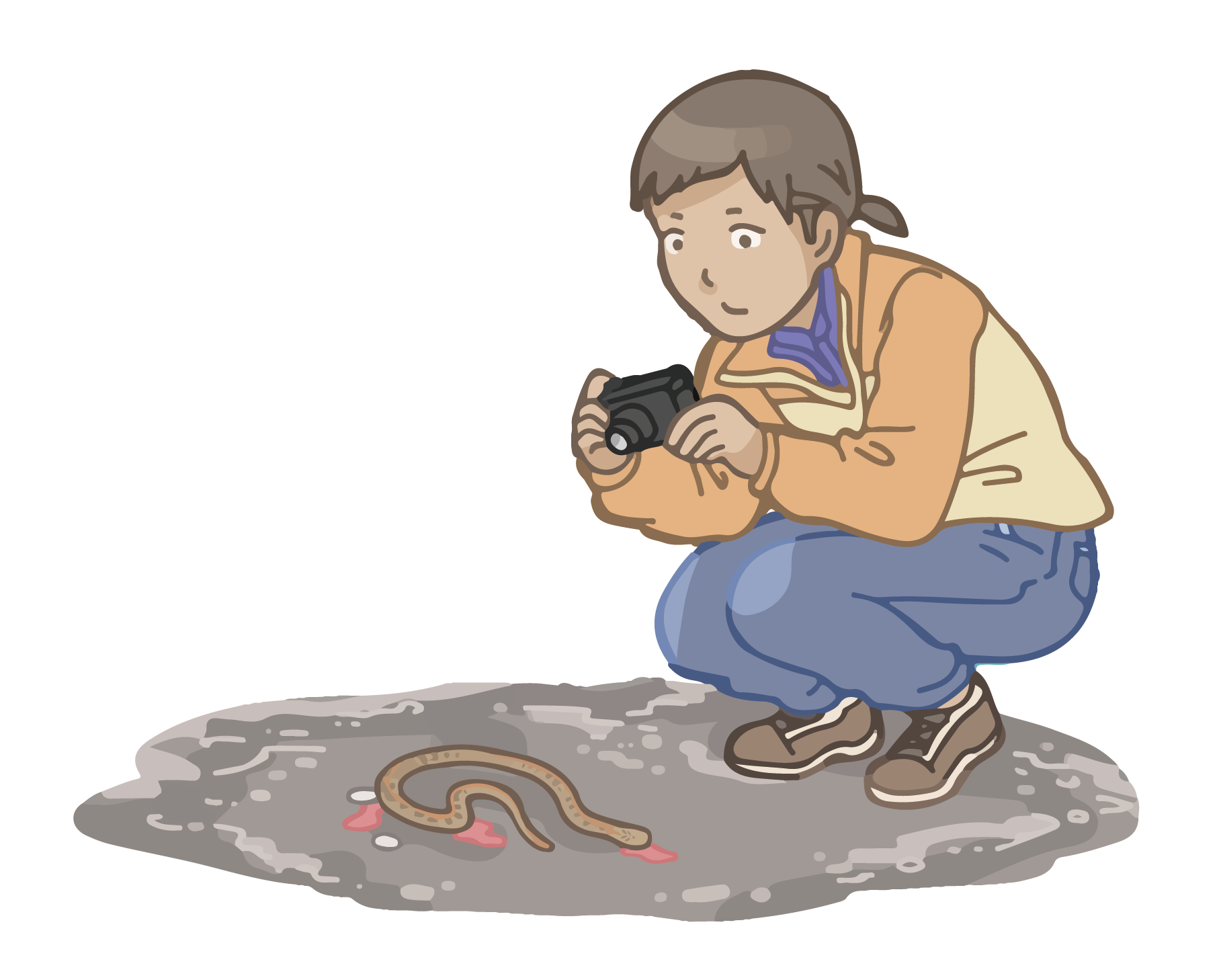
The main method employed by the Taiwan Roadkill Observation Network (TaiRON) citizen science project is opportunistic crowdsourcing, where individuals record the locations and dates of roadkill victims. However, the data obtained through opportunistic crowdsourcing is limited, lacking methodological and statistical robustness. Notably, this data is inherently biased and cannot accurately predict the annual amount of roadkill occurrences in Taiwan, identify roadkill hotspots, or discern differences in trends between seasons and years.
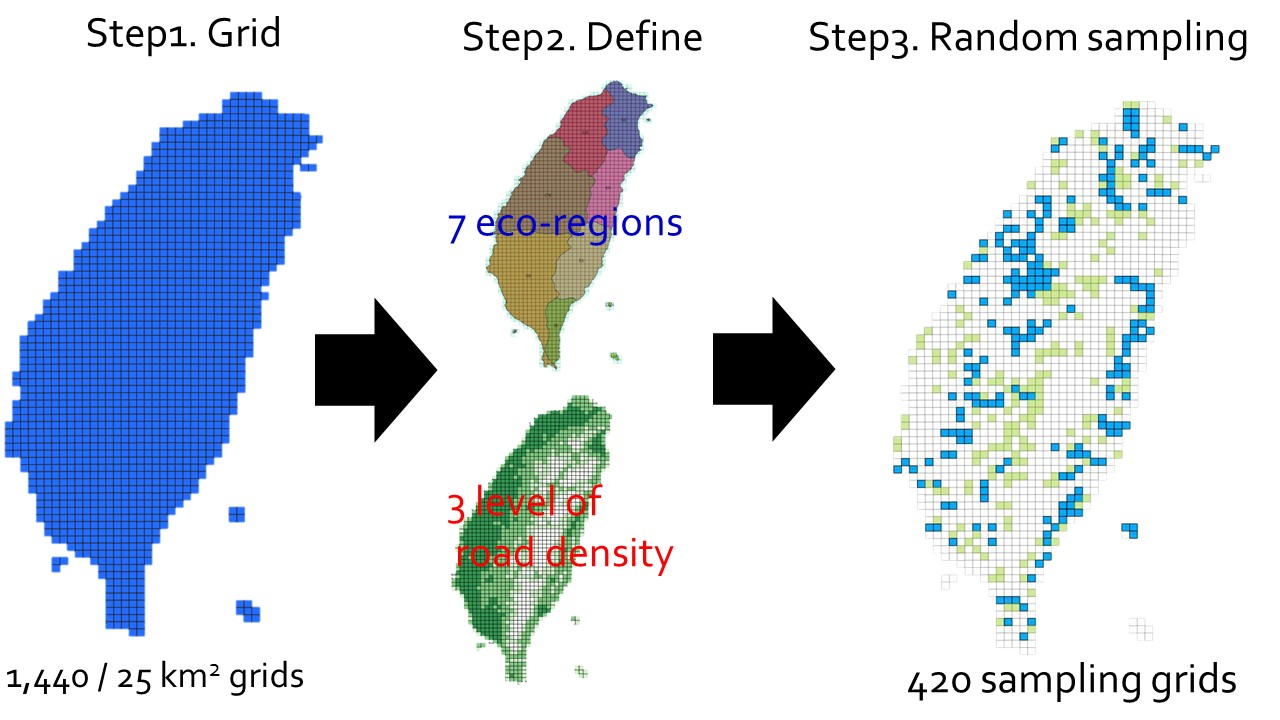
To address these statistical shortcomings in the TaiRON database, Taiwan has been divided into 1,440 25 sqkm grids, categorized into seven eco-regions, three levels of road density, and four road types. A total of 420 sampled grids were selected using stratified random sampling methods with proportional allocations from each eco-region and road density level. Volunteer citizen scientists can choose from these 420 grids for our systematic roadkill survey sampling. All sampled grids must be surveyed once in January, April, July, and October annually. Citizen scientists are required to survey two or more road types in each sampled grid, and each route must exceed 3 km.
The Systematic Roadkill Survey began in 2018 and initially involved monitoring roadkill every three months.
However, starting from 2023, the monitoring frequency was reduced to every six months.
Cumulative Statistical Period: January 2018 - December 2023
Cumulative Number of Surveys: 22 seasonal surveys over 6 years
Cumulative Number of Participants: 4,294 person-times
Cumulative Line Transect Surveys: 9480 line transects
Cumulative Survey Total Mileage: 37,262.9 Km
Cumulative Recorded Number of Animal Roadkill Carcass: 28,007
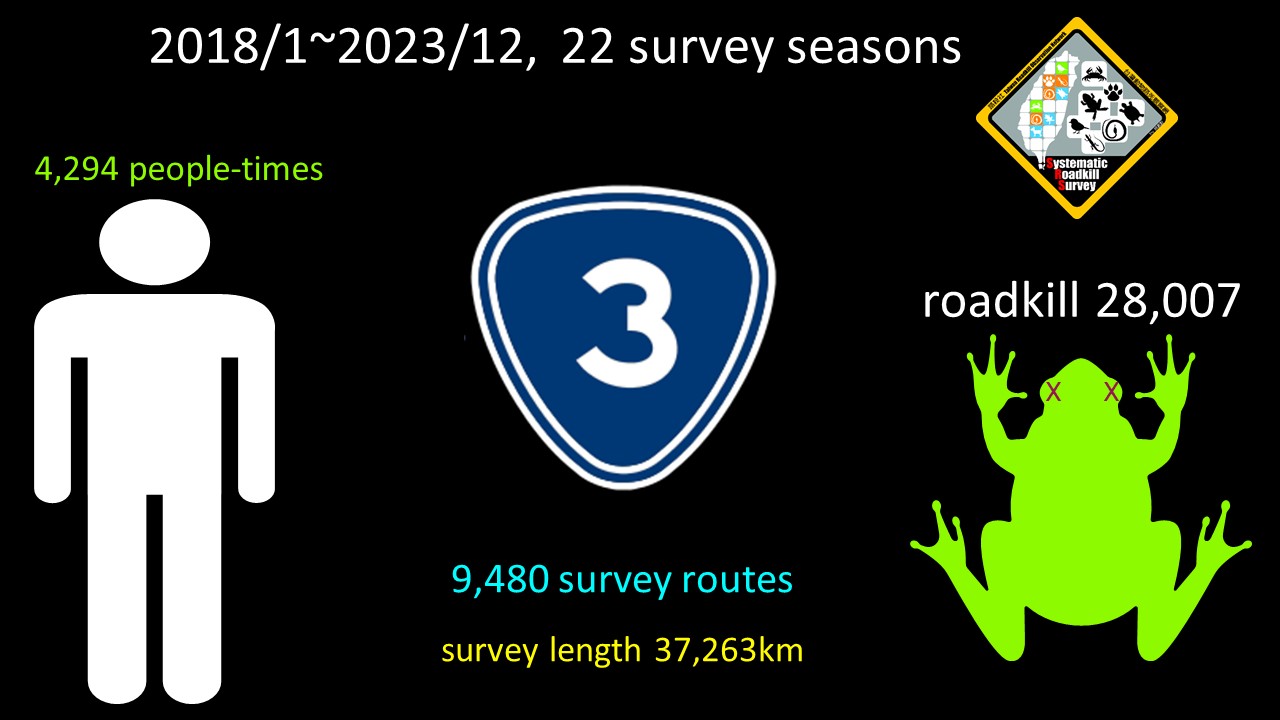
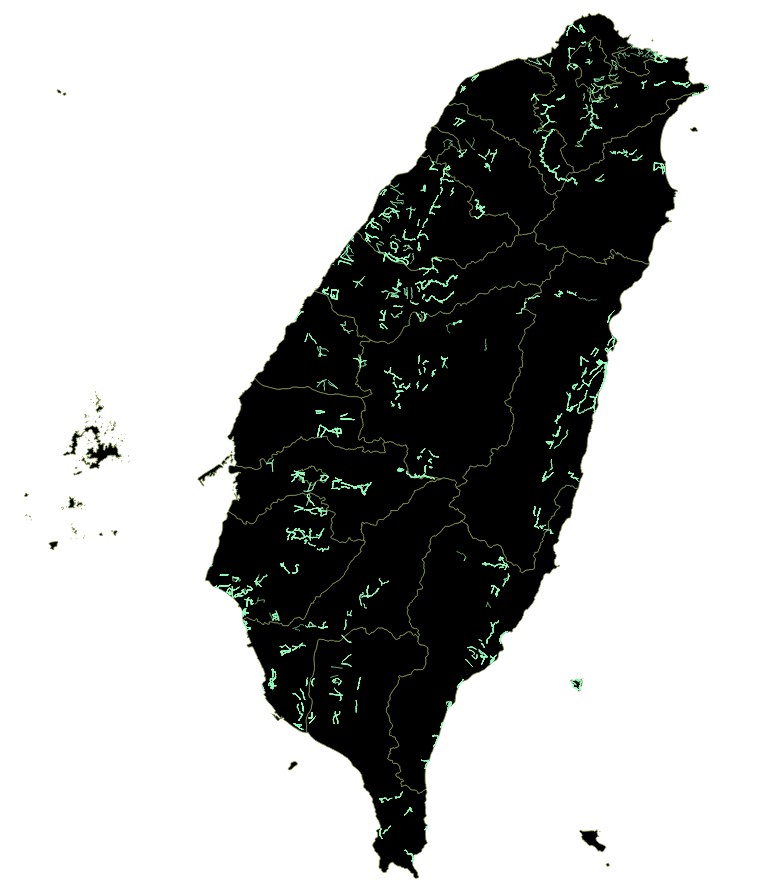
Distribution Diagram of All Line Transect Surveys over the Years
In terms of quantity, Amphibians (兩生綱) and Reptiles (爬行綱) are the main varieties of animals found among animal road deaths in Taiwan and the two together account for 80% of all data. Road deaths in these two groups are significantly different in different seasons. Amphibians’ activities are susceptible to temperature or rainfall. The number of recorded Amphibian road deaths will be different in wet and dry seasons or depending on rainfall. Usually, more roadkill of Amphibians occurs in rainy season or after rainy nights. In addition to climate factors, some species have predictable seasonal activity patterns, especially when they need to find mates to reproduce or colonize habitat resources, which can easily lead to seasonal changes in road deaths. Sauters brown frog (Rana sauteri 梭德氏赤蛙) is an obvious example. 97.4% of Sauters brown frog road deaths occurs in autumn, and Sauters brown frog accounts for 15.7% of Amphibian roadkills in the autumn. In other words, the seasonal fluctuations in animal road deaths in Taiwan are mainly affected by Amphibians’ life cycle activities.
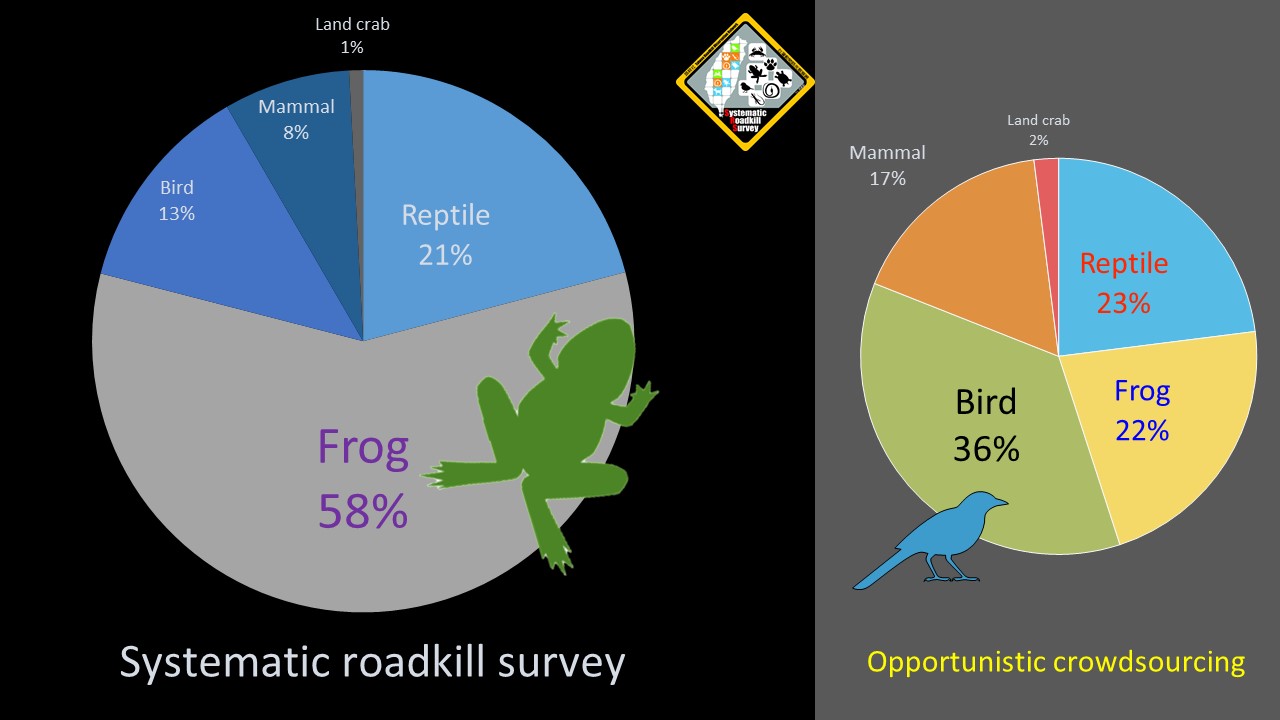
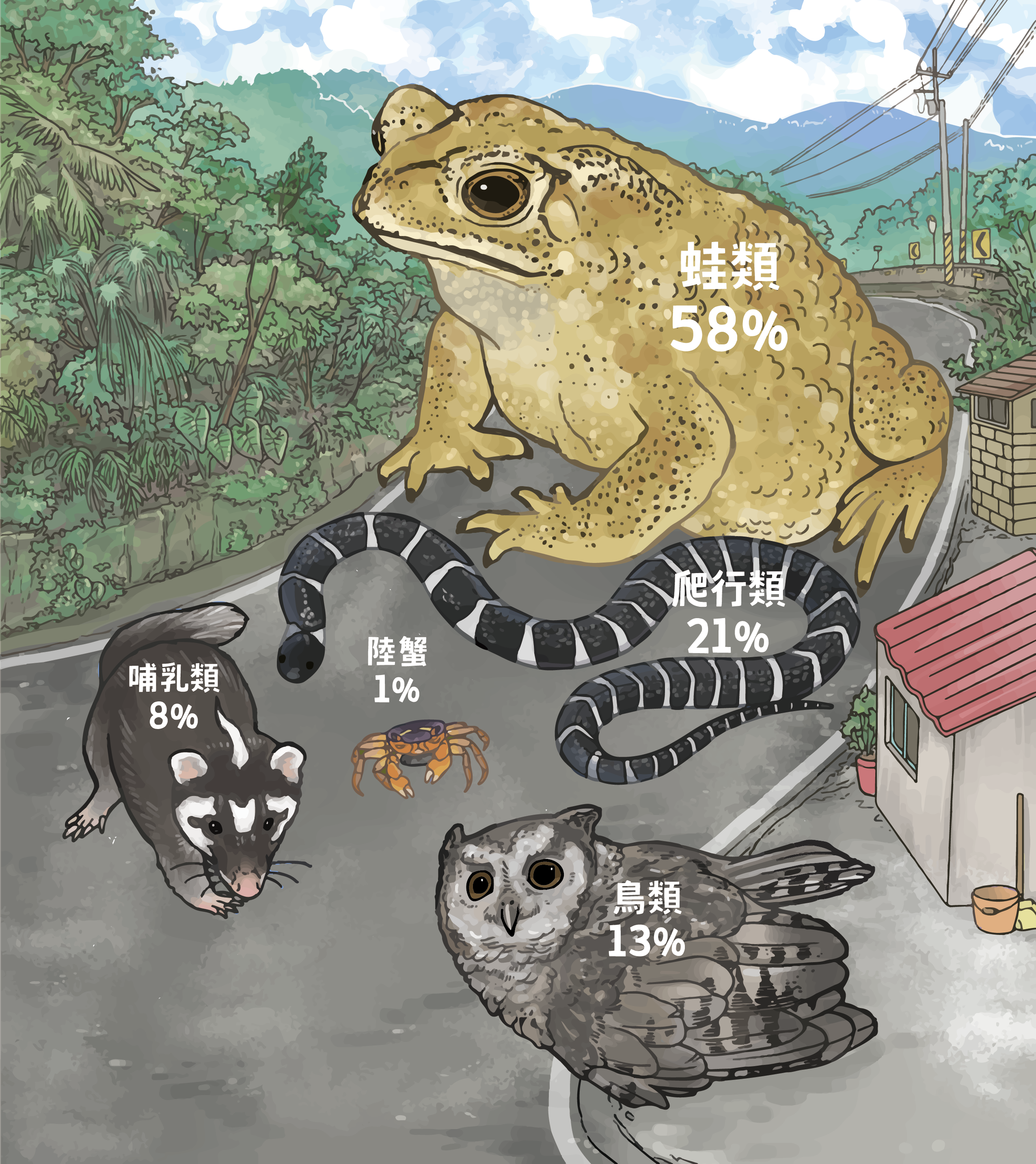
Based on the data obtained systematically and assuming that animal carcasses can remain on the road for 3 days (Santos et al., 2011), we estimated the total number of animal road deaths in each season separately, and finally calculated the total road deaths per year. The results show the estimated total road deaths of Land vertebrates (陸生脊椎動物) and Land crabs (陸蟹) in Taiwan, which is 14.6 million~16 million in 2018 and 18.4 million ~20 million in 2019, with road deaths in 2020 dropping back to the 2018 level of 14.5 million ~16 million as in 2018.
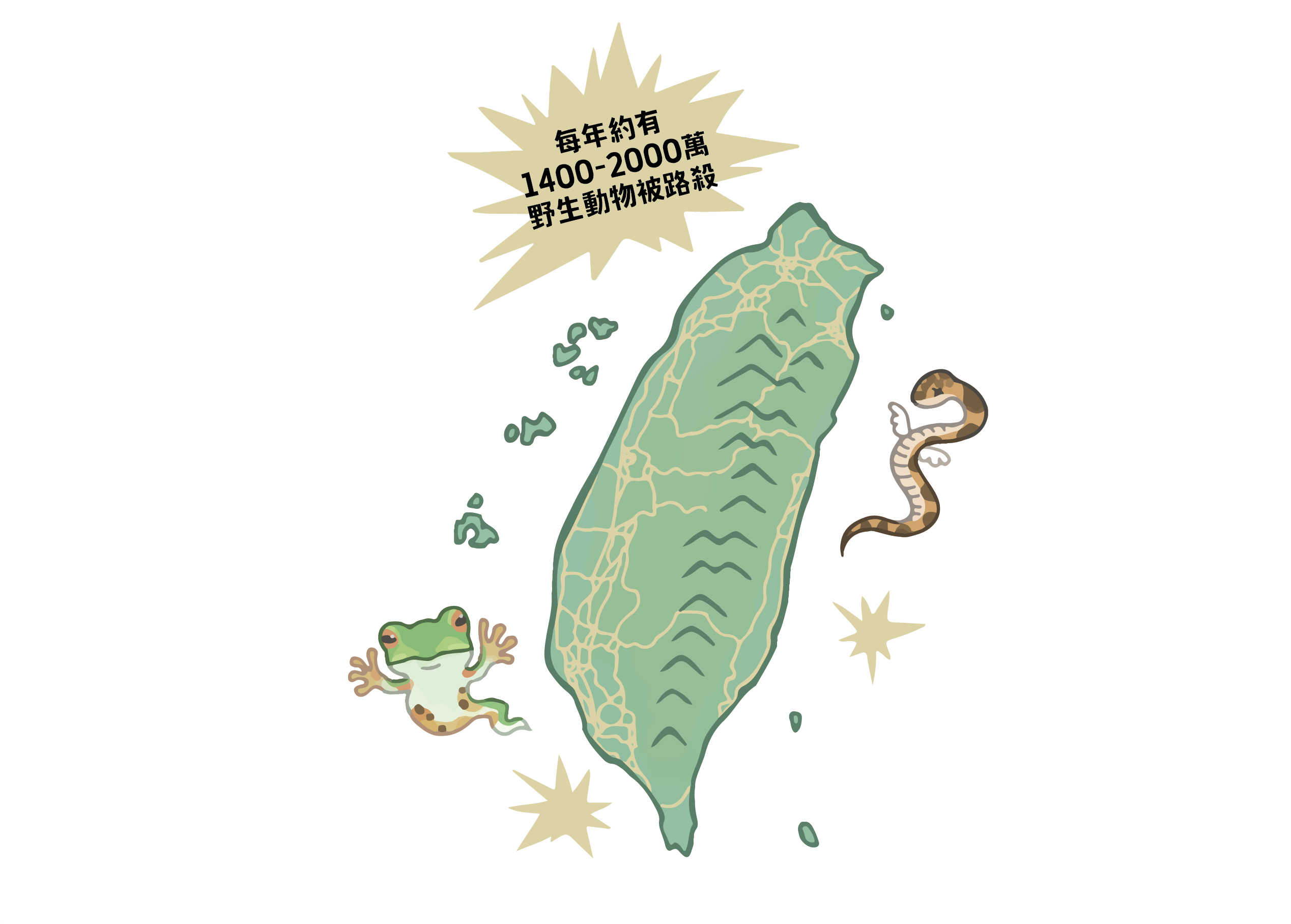
According to estimates based on the results of systematic sampling and simultaneous surveys in the past 3 years, the number of Land vertebrates becoming roadkill in Taiwan is between 15 million to 20 million (this is still an underestimation, and the actual number of deaths will be higher).